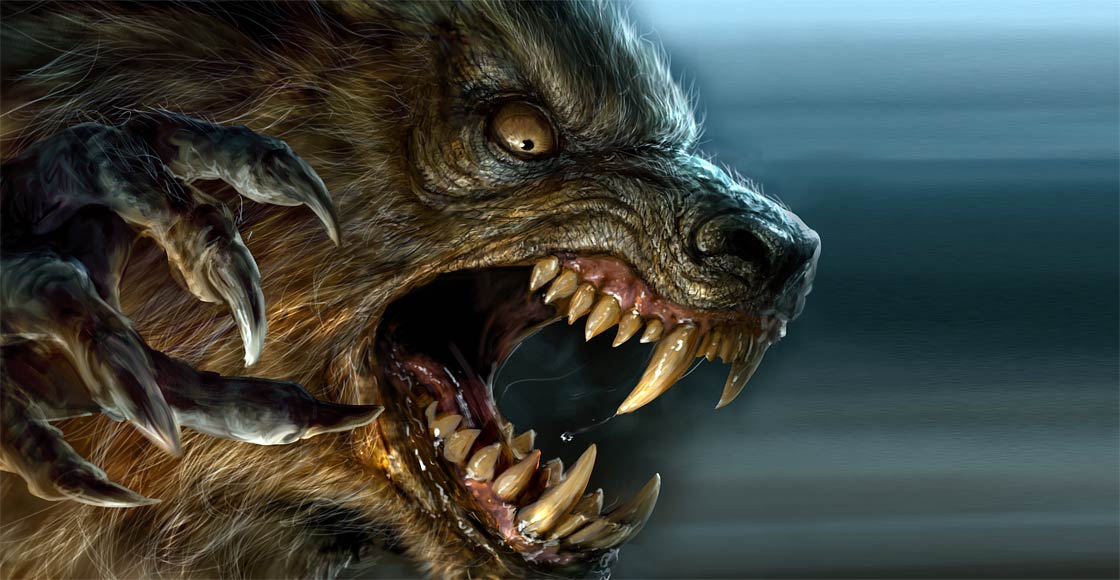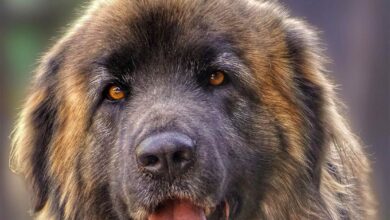Werewolf, werewolves
Werewolf Tales from Around the World: A Global Exploration of Lycanthropy
It was a dark and stormy night, and the full moon shone eerily through the dense clouds overhead. The air was thick with the scent of fear, and the sound of howling wolves echoed through the forest. As I wandered through the woods, my heart racing with anticipation and dread, I could feel a strange energy building within me. It was as if my very soul was shifting and changing, transforming into something dark and primal.
And then I saw him – a figure looming in the shadows, with eyes that burned like fire and teeth as sharp as knives. He was a werewolf, a creature of the night who prowled the forest in search of prey.
I tried to run, to escape his grasp, but it was too late. He lunged at me with ferocious speed, his claws tearing through my flesh and his teeth sinking deep into my neck.
As I felt my life slipping away, I knew that I had been cursed – cursed to roam the earth as a monster, a creature of the night, forever bound to the full moon and the call of the wild.
And so began my descent into madness, my transformation into a beast. I was no longer a man, but a werewolf – a creature of darkness, condemned to hunt and kill for all eternity.
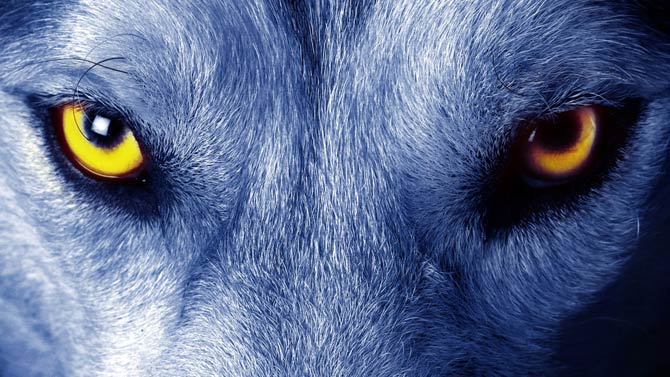
Werewolf, werwolf
In the fun New Zealand comedy “What We Do in the Shadows” (2014), werewolves appear as a group of inseparable colleagues. Like a pack, they go to parties, drink beer and turn into werewolves together. The whole group is ruled by the alpha male, whose jokes should be laughed at, even if they are not funny. Hmm, something like politics, right 😉
This artistic variation on the werewolf theme slightly warms their image. We are used to the werewolf being portrayed as a ruthless monster howling at the moon. With this article, we want to show that the character of a werewolf cannot be defined only by the term “oversized dog”. We will talk about transformations, the weaknesses of werewolves, as well as their dark connections with each of us.
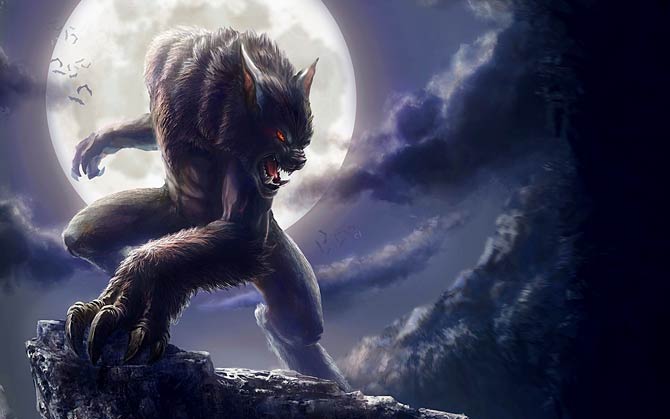
What are werewolves?
If you have ever watched a movie or comic book about werewolves, you more or less know what werewolves are. Simply put, these are people, who cyclically transform into a half-human half-wolf or a large wolf.
We find the first mentions of werewolf and lycanthropy in antiquity. The word “lycanthrope” has been used frequently for this type of being. It comes from Greek and is a combination of the words lýkos – “wolf” and ánthropos – “man”.
Element of folklore
In Europe, the werewolf is not a new character and has not appeared along with horror films such as “The Wolf” (1994) or parodies of “What We Do in the Shadows”. It must be admitted, however, that a werewolf, right next to a vampire, is very grateful material for a movie, comic book or book.
Werewolves are mentioned in ancient and medieval sources. The latter were tinted with a Christian interpretation, giving the werewolves a devilish look. Half-man half-wolf also appears in the so-called New World thanks to the colonialists.
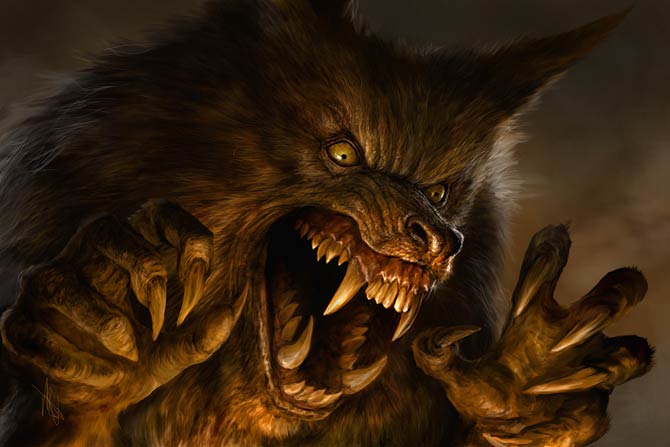
The Devil’s Spawn?
Numerous werewolf movies use one scenario – a random man is bitten by a wolf. After a time, he himself begins to change into a wolf-like creature. According to European legends, however, you can become a werewolf in another way – as a result of a charm / curse.
The character of a werewolf is invariably associated with an unpredictable beast that kills everyone it meets. Sometimes, however, he is portrayed as a protector of his human allies. Therefore, it cannot be unequivocally stated that the figure of a werewolf is associated only with demonic forces. This is well illustrated by the movie “The Wolf” (1994), in which Jack Nicholson plays the main role. When the hero turned into a werewolf, he sensed (like a dog) people who were kind to him, as well as those who threatened him or his relatives.

Types of werewolves
A werewolf was not equal to a werewolf. Depending on the method of transformation and a few other issues, there are 3 types of werewolves:
Shapeshifter
Shapeshifter – in the movie “Twilight” there is a certain Jacob Black, who has the ability to transform into a wolf (not a werewolf) at any time. The transformation was at his will, although intense anger or excitement could provoke a spontaneous transformation. It is believed that the original werewolf legends described this skill. This type of werewolf was not acquired – it did not appear as a result of being bitten by another wolf. It was an inborn trait.
Mutant
Mutant – the most famous character: half-man half-wolf. The body is more like a human body, it moves on two legs. The skin, however, is covered with long hair, nails are replaced by claws and fangs elongate. Often times, a werewolf is much larger than an ordinary human (but this is not a rule). Werewolves of this type carry the curse of werewolves. Depending on the legend (and there are a lot of them, because descriptions of werewolves appear both in Norse, Slavic and Mediterranean myths), this werewolf was a human during the day, but turned into a beast at night. Other versions say that the werewolf does not return to his human form. The most common version is that a man turns into a werewolf during a full moon. The ultimate form of transformation, however, is to be a wolf. So once the “damned” one turns into a wolf, it can never again transform into a human, or a werewolf. This scenario appears in the already mentioned “Wolf”, shot in 1994.
“Real” werewolf
“Real” werewolf – a human being that uncontrollably turns into a wolf / werewolf during the full moon. The transformed does not control his hunger, rage and other urges, becoming deadly to humans and animals. It does not distinguish good people or friends from strangers / bad. He acts like a wild, furious animal. The human mind is disappearing. When the unfortunate man wakes up as a human in the morning, he remembers nothing or only has flashes in his dreams. An “infected” can “infect” other persons with lycanthropy, unless, of course, he kills them.
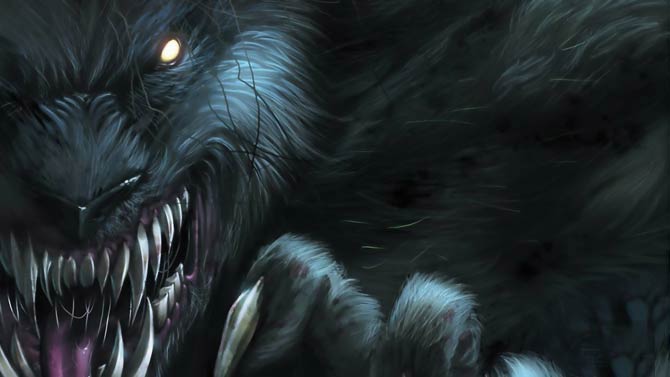
Weaknesses
Vampires cannot exist in daylight, they flee from worship objects, and die if they do not eat human blood. Werewolves, despite possessing enormous physical strength and unbridled animal drives, also have weaknesses. So if you ever meet a werewolf on your way, you will know what to do to avoid being eaten or infected (well, unless you want to check what it is like to be a werewolf ;)).
Aconitum
Aconitum (Aconite, Wolf’s bane – “wolf’s poison”) – poisonous and healing plant with magical properties. It appears, for example, in the series of games “The Witcher” and “Gothic” as the so-called “wolf’s-bane”. To werewolves, it is a deadly threat. It can also be deadly for humans because it contains aconitine – an alkaloid, even a small dose of which in the body can cause rapid death. The tubers and leaves are the most poisonous (although all parts of aconite are toxic). Death occurs due to impaired breathing and heart function.
Pure Silver
Silver bullets or daggers are weapons that effectively annihilate a werewolf.
Spells and magic rituals
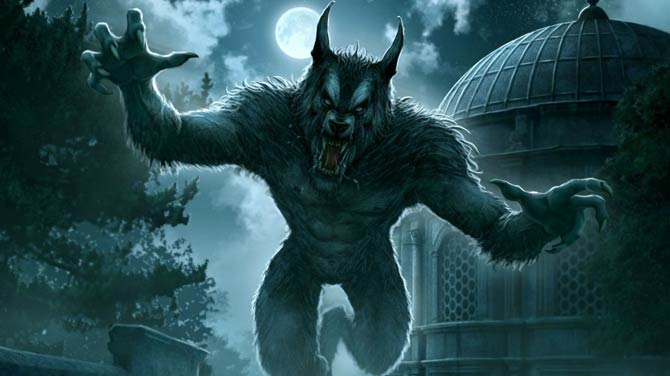
Disease – clinical lycanthropy
Today we call lycanthropy a certain mental illness. The person affected by this disorder considers himself a wolf or other predatory animal. He can also be convinced that he can turn into a large predator (not necessarily a wolf).
A person with lycanthropy can “see” their body grow fur and their nails and fangs lengthen. During a full moon, she can walk on four legs and howl at the moon. In the extreme form of this disorder, a person can kill another person, including his loved ones. It ceases to recognize people, becoming – like a wolf – a dangerous predator.

Questions about meaning
One of the most recognizable fantasy characters is a complex being. Or maybe werewolves are not only an invention of mad chroniclers, but a metaphor for our shadow? Does each of us sometimes turn into a beast that harms everyone around us?
Although we do not grow claws and fangs, our inner darkness comes to the surface (often during the growing moon and full moon). In any case, the figure of a dark wild creature, which is a werewolf, should not only frighten us, but also arouse reflection about ourselves.
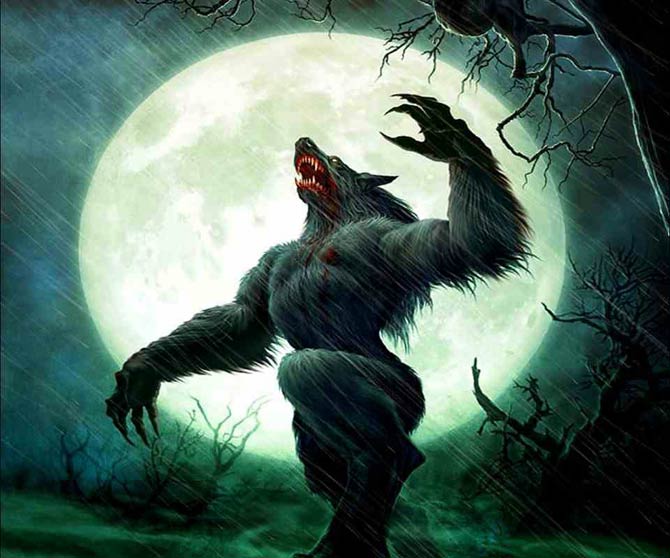
Werewolves – interesting facts
- In the northern part of Europe, a person could turn not only into a wolf, but also into a bear.
- In India (and other parts of Asia) the werewolf’s counterpart was a man transforming into a tiger.
- Werewolf-like characters appear, among others in Scandinavian, German, French, Latvian, Albanian, Czech and Serbian mythologies and fairy tales. Wolf-like characters also appear in Indian legends.
- The word “lycanthrope” may come from Lycaon – the mythological king of Arcadia. It is said that he gave Zeus human flesh to eat, which infuriated the gods to such an extent that they turned the king into a wolf.
- The English word werewolf means manwolf (“man-wolf”). The word “wer” has Saxon roots and means “man”.
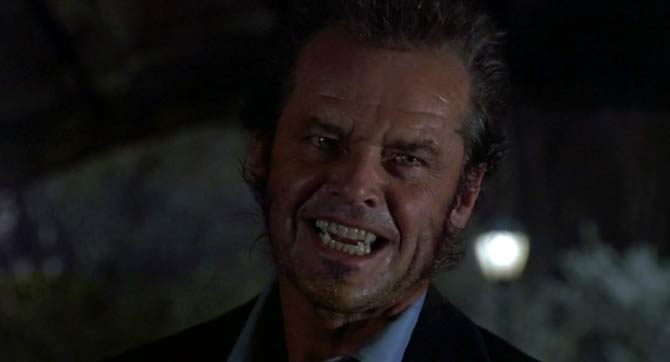
Q&A (questions and answers) about werewolf / werewolves
Q: What is a werewolf?
A: A werewolf, also known as a lycanthrope, is a mythical creature that is believed to be able to transform from a human into a wolf or a wolf-like creature.
Q: How does a person become a werewolf?
A: In most traditional werewolf mythology, a person can become a werewolf by being bitten or scratched by another werewolf. In other versions, a person can become a werewolf by putting on a wolf-skin or through a curse.
Q: What are some common traits of werewolves?
A: Werewolves are often depicted as having enhanced strength and senses, the ability to heal quickly from injuries, and a heightened sense of aggression. They are also said to have a weakness to silver.
Q: Are werewolves real?
A: No, werewolves are not real. They are a product of myth and folklore.
Q: What is the origin of the werewolf myth?
A: The origin of the werewolf myth can be traced back to ancient Greek and Roman mythology, where there were tales of humans transforming into animals. The werewolf as we know it today was popularized in European folklore during the Middle Ages.
Q: Can werewolves only transform during a full moon?
A: The idea that werewolves can only transform during a full moon is a relatively recent addition to werewolf mythology. In earlier versions, werewolves were said to be able to transform at will or only on certain nights of the year.
Q: How do you kill a werewolf?
A: In most werewolf mythology, a werewolf can be killed by being shot with a silver bullet or stabbed with a silver weapon.
Q: Have there been any real-life sightings of werewolves?
A: No, there have been no credible sightings of werewolves. Reports of werewolf sightings are generally considered to be the result of misidentification, hoaxes, or superstition.
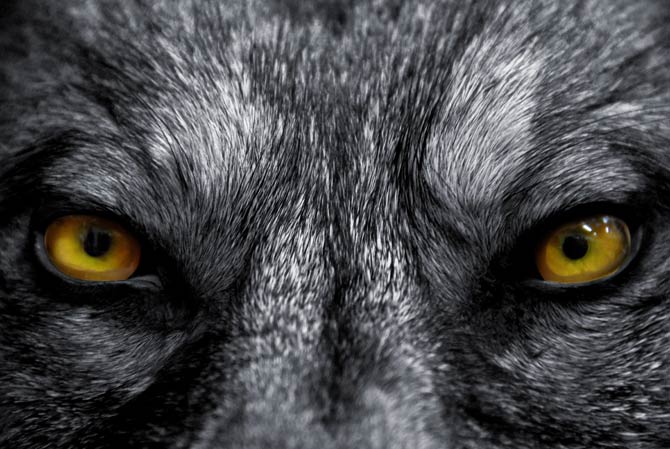
Image credits to Chris Scalf.
Recommended
- Cryptozoology
- Giant snakes and sea monsters
- King Kong
- Godzilla
- Dragons
- Loch Ness monster
- Minnesota Iceman
- Yeti
- Bigfoot (Sasquatch)
- Yowie
- Alma
- Mokele-mbembe
- Beast of Gévaudan
- Orang Pendek
- Marozi
- Nadi Bear
- Aboriginal Rainbow Serpent
- Dyatlov Pass incident
- Tsavo lions
- Leopard of Panar
- Champawat Tiger
- Kesagake – a vengeful bear
- Crocodile Gustave
- Man-eaters
- Animal records

